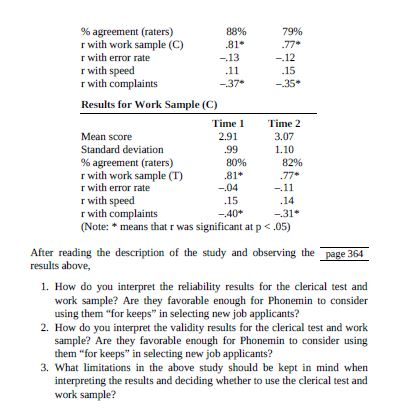

“It is critical that test items measure the exact behavior described in the objective.” (p.143) “Posttests are administered following instruction, and they are parallel to pretests, except they do not include items on entry skills.” (p.142)
#Chapter 7 developing assessment instruments quiz how to
This misses a point – one of the reasons to do practice tests is for learning to practice how to write the test, as test writing is a skill in and of itself. “The purpose for practice tests is to provide active learner participation during instruction.” (p.140) The idea here is that the pretest is used to influence the actual instruction, not the design of the module. “The purpose of a pretest is not necessarily to show a gain in learning after instruction by comparison with a posttest, but rather to profile the learners with regard to the instructional analysis.” (p.139)

“It should be noted that if there are no significant entry skills identified during the instructional analysis, then there is no need to develop corresponding objectives and test items.” (p.139) ” criterion-referenced tests are the backbone of the assessment used for decision making in the development and evaluation of particular instruction” (p.139)

In contrast, norm-referenced tests are used to compare the relative performance of learners in larger areas of content, such as a year’s content within a specific subject area for example, mathematics or reading.” (p.138-139) “The main purpose for a criterion-referenced test is to examine a person’s or group’s achievement in a carefully defined content area thus, it is focused on specific goals and objectives within a given content area. This is a key idea – the one-to-one correspondence between test items and learning objectives. The major reason is that the test items must correspond one to one with the performance objectives.” (p.138) “You may wonder why test development appears at this point in the instructional design process rather than after instruction has been developed. “Learner-centered assessments are to be criterion-referenced (i.e., linked to instructional goals and an explicit set of performance objectives derived from the goals).” (p.137) 3. Needs Analysis: What problem are you trying to solve?Ĩ. Task analysis (skills and knowledge analysis)Ĭhapter 1: Introduction to Instructional DesignĬhapter 2: Identifying Instructional Goals Using Front-End AnalysisĬhapter 4: Identifying Subordinate and Entry SkillsĬhapter 5: Analyzing Learners and ContextsĬhapter 6: Writing Performance ObjectivesĬhapter 7: Developing assessment instrumentsĬhapter 8: Planning the instructional strategy: Theoretical basesĬhapter 9: Planning logistics and management for the instructional strategyĬhapter 10: Developing instructional materialsĬhapter 11: Designing and conducting formative evaluationsĬhapter 13: Designing and conducting summative evaluations


 0 kommentar(er)
0 kommentar(er)
